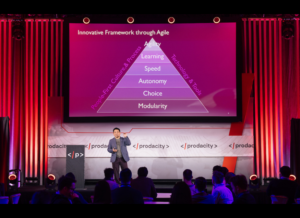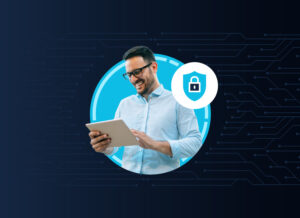Breaking funding barriers to invest in infrastructure and more
The Infrastructure Investment and Jobs Act (IIJA) provides a historic $973B investment into America’s growing backlog of infrastructure needs. For decades, roads, bridges, water and wastewater networks, ports, and electrical grids have all lacked the funds needed to repair them. Besides addressing these critical infrastructure needs, the IIJA also includes $550B of new investments addressing critical, forward-thinking priorities such as digital equity, cybersecurity, and resiliency. This historic bill will help federal, state, and local government agencies address some of their community’s most critical needs.
There’s a great deal to look forward to in the IIJA, but it is also more complex than the other recent stimulus bills, such as the CARES Act and ARPA. As we all begin to unpack the benefits contained in it, one thing is for sure—it’s going to take time and effort for agencies involved to build and efficiently administer the new programs outlined. This will be a big undertaking, but agencies can lessen the load by ensuring their systems are leveraging modern tools that enable automation, speed, and agility.
3 steps to prepare your agency for the IIJA
Agency project management needs are about to explode. Federal agencies like the Department of the Interior or Department of Transportation will need to build processes and applications for receiving proposals, awarding discretionary funds, and tracking results. Meanwhile, state and local governments are going to need to manage most of the infrastructure projects themselves. Workflows, permits, inspections, contractors, and resource allocation will all be part of the process. That’s a lot to keep an eye on. For your agency maximize this once-in-a-generation investment, you’ll want modern technology solutions that bring together the agility, efficiency, and security you need to make it happen.
Replace outdated project management tools
How often do you find yourself hunting down details on a project’s status or trying to figure out why a project that was due yesterday is still delayed? How often are you updating quad charts or exporting data to a spreadsheet in order to sort and filter for answers? If the answer is “every week,” a project management tool update might be in order.
Agile project management tools help coordinate work in real-time and give you a bird’s-eye view of a project so you always know how things are going. They also allow you to dive in and see progress and problems on the ground, letting you resolve bottlenecks before they affect larger portions of a project. The insights and automation delivered by a modern project management tool can also lead to smoother, more efficient workflows.
 Use an ESM approach with internal service workflows
Use an ESM approach with internal service workflows
An Enterprise Service Management (ESM) approach can save vast amounts of time within internal service workflows. Leveraging IT solutions to make workplace services from all departments more accessible and instantaneous can transform workplace efficiency. Forms with automatic routing and signatures, easy-to-set-up self-services with integrated knowledge guides, and efficient issue resolution can all become simple, intelligent online processes. This relieves the staff burden of phone support, filling in spreadsheets, and email overload. You can also use an ESM approach to ensure audit-ready communication trails are in place no matter how large a project is. Once your agency is up to speed, you can then expand ESM workflows to more efficiently engage with citizens.
Build in cybersecurity and verification best practices…right from the start
You already know security is crucial for agencies. Make sure it’s a top priority by using DevSecOps tools and methodologies when building new applications. DevSecOps takes the best practices of general DevOps, and adds security verification as an active, integrated part of the development process. A DevSecOps approach makes security a shared responsibility throughout an application’s lifecycle. This means building in security best practices from day one and having processes in place to update that security as standards change. It’s always simple to transition from waterfall to agile, but you don’t have to do it alone. You can find everything from hardened containers to Team Playbooks that can help your agency or program shift left.
Take advantage of this historic opportunity with Atlassian
Atlassian provides solutions that let you create a new framework based on automation, speed, and agility. We also provide best practices and playbooks for modernizing legacy systems. Whether you’re managing complex projects, building new efficient service workflows, or securely developing new applications, agency teams can work better together to turn this investment opportunity into meaningful outcomes for your communities. To learn more about how we help agencies create agile systems that bring everyone together, contact your Atlassian representative for more information.







